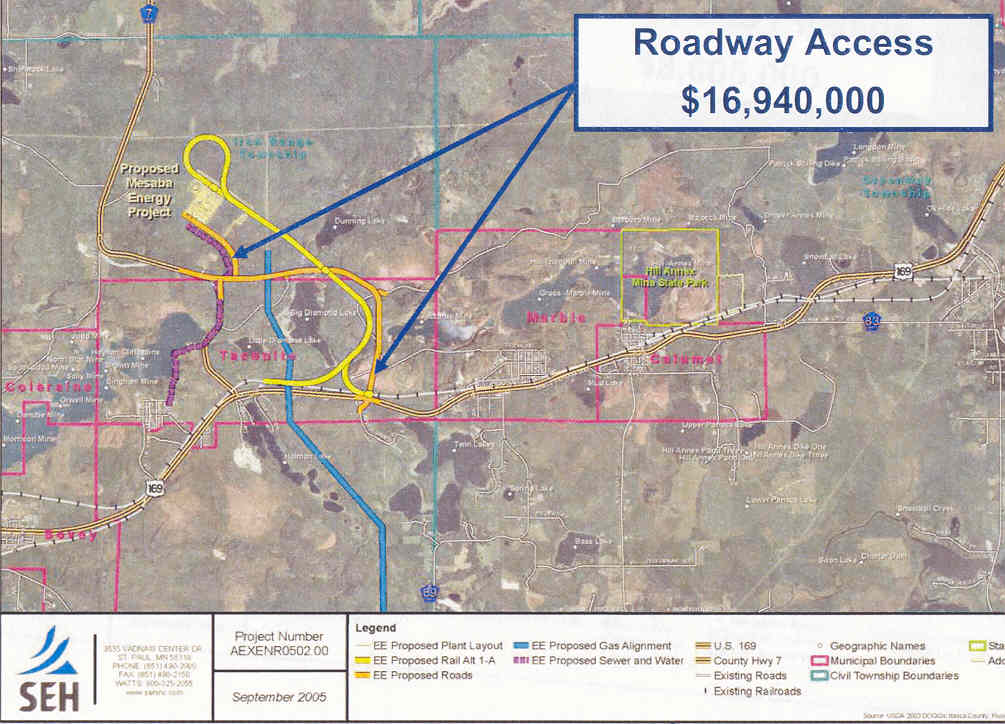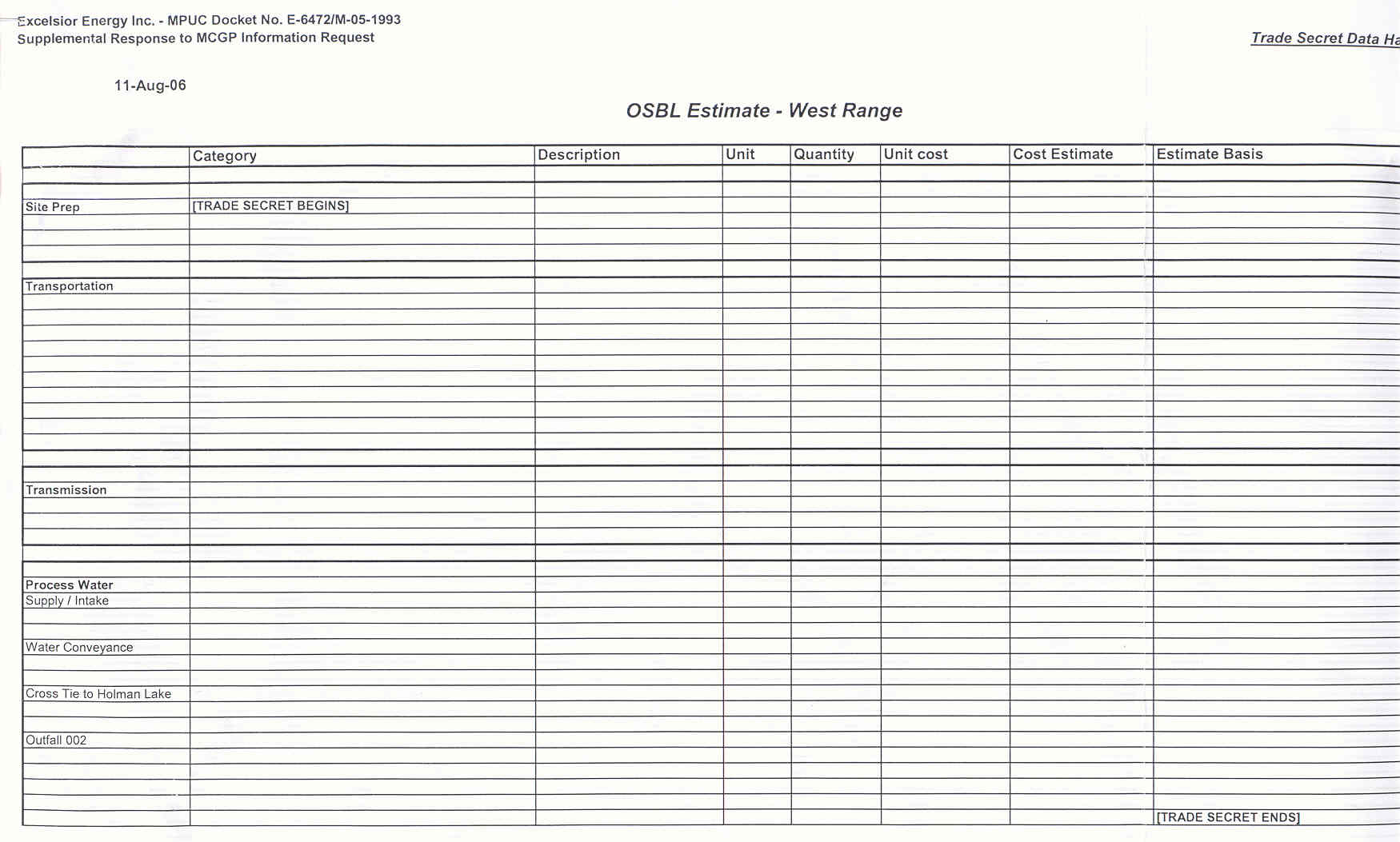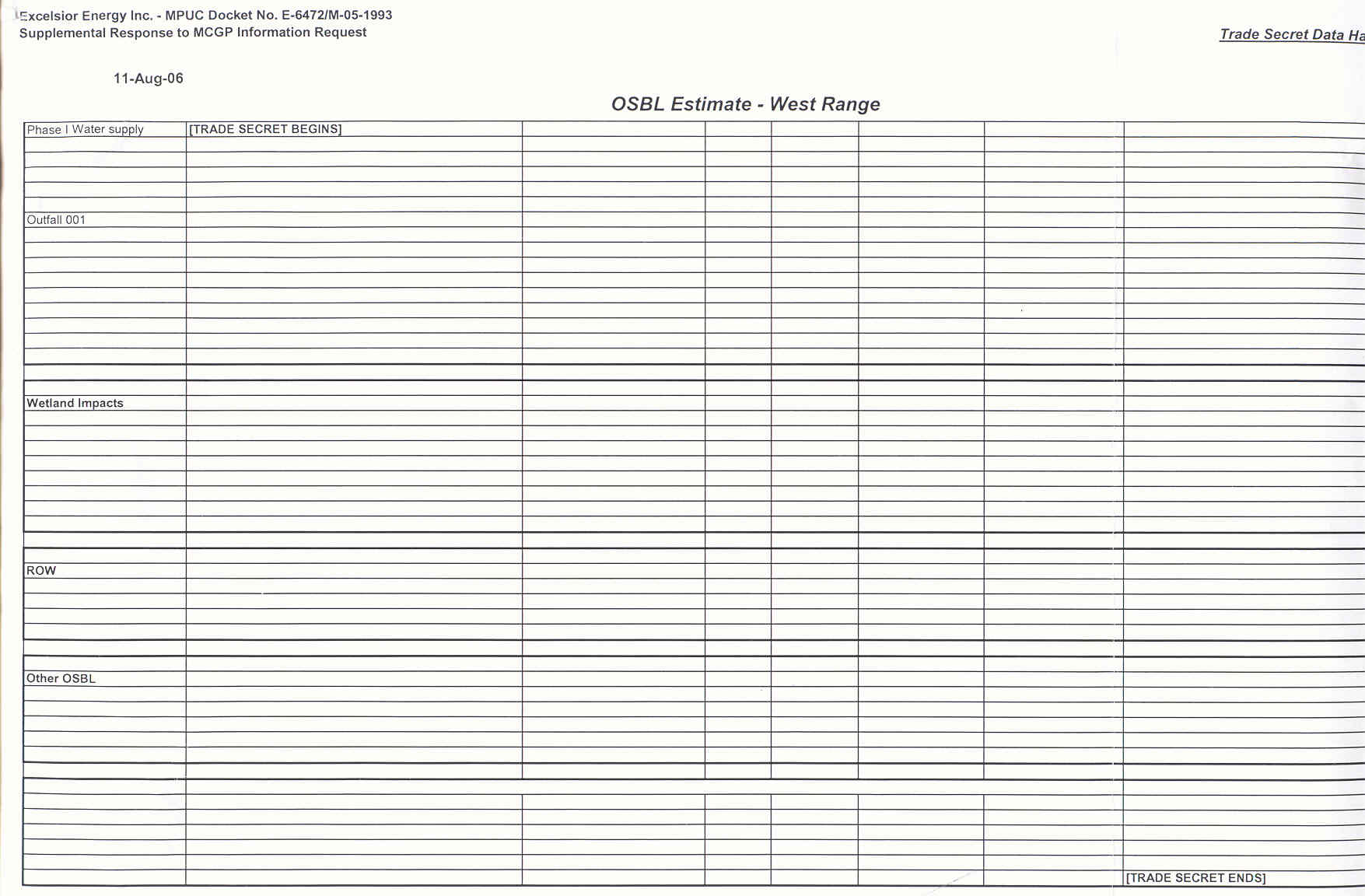Excelsior Energy Proposed Roads
September 18th, 2006
This one’s for you Chuck!
If it looks like a duck, and it walks like a duck…

Let’s all just goose step… QUACK QUACK QUACK
DUCK! DUCK, CHUCK! HEY CHUCK, IT’S A DUCK!
Below is a map from a January 2006 handout produced by Chuck’s employer, SEH, Short Elliot Hendrickson (not related to Stephanie Henricksen, whose ducks were assassinated during the last election cycle). It’s entitled “Public Infrastructure Improvement Study: Public Infrastructure Improvements to Support the Proposed Minnesota Steel Industries Taconite Mine, Pellet Plant and Steel Mill PRoject and Excelsior Energy/Mesaba Energy Project. The packet has an overall view of combined “Public Infrastructure Improvements to Support the Proposed (both projects named here). There is a table, “Table 1,” which shows itemized costs for “Shared Infrastructure, Excelsior Energy, Minnesota Steel, and Total” as headings, with line items for “Roadway,” “Railroad,” “Gas Pipeline,” “Water,” “Sewer,” “Subtotal,” Design/Const Admin at 15%” and “Total.”
The two projects are broken down to show Infrastructure Improvements for each. The first page in the Mesaba section is an overview of all the infrastructure, and the third page of the Mesaba section is entitled “Itasca County Public Infrastructure, Mesaba Energy Project” and in the middle, “Roadway Access, $16,940,000.” From the $16,940,000 are arrows pointing to an orange road, which is identified in the legend as “EE Proposed Roads.” The road shown is a route that runs nearly east/west along the north side of Big Diamond Lake, and then continues east and then curves south and connects to Hwy. 169. From this road, a bit in from the west, is an orange spur going to the front door of the Mesaba power plant. Well, maybe it’s a side door, but it’s right there. And there’s another short link going south, and it appears Scenic Hwy 7 remains connected. See for yourself on this cropped version:

Can you see the place, the third line under “Legend” where it has that orange “road” and says “EE Proposed Route?” If you’re having trouble seeing it, here’s the full map on PDF: seh-ee-proposed-roads-public-infrastructure-improvement-study-jan-2006.pdf
Now what’s the purpose of this road? Whose brilliant idea was it? Who is paying for it? Who has the burden? Who has the risk? Who gets the benefit? Who is arranging for construction of this road, besides SEH, that is… and will someone please explain to me not only why that orange road is there in the first place, but why there’s that little orange spur going north? Itasca County Public Infrastructure… uh-huh… right… According to the legend, this is an “Excelsior Energy Proposed Road,” for access to the plant. Is Excelsior Energy paying for it? $16,940,000!
DUCK, CHUCK, IT’S A DUCK!!!
It’s all about shifting the burdens and risk. Xcel Energy argues in its brief (Reed, Direct Testimony at 2-3, 6, et seq.) that Excelsior Energy is attempting an unprecedented shift of burdens and risk off of Excelsior onto Xcel, calling it, “beyond industry norms,” and “fundamentally inconsistent with the public interest.”
QUACK, QUACK, QUACK…
mncoalgasplant.com, in its Statement of the Case, argues that Excelsior Energy is impermissibly and improperly shifting the risks and burdens to the public.
QUACK, QUACK, QUACK, QUACK, QUACK, QUACK…
They seem to have a problem with our characterization of what’s coming down, what we’re observing.. Well, OK, fine, let’s all take a close look at the Infrastructure costs and see…

Ummmmmmm… there’s nothing there… well, let’s check out page 2:

Yet Palast, Opponheim, and MacGregor wax on about U.S. utility regulatory process:
… In Britain, as in almost every country, prices are set in secret meetings between the government’s regulatory experts and utility executives. Under the guise of “commercial confidentiality,” the public is denied a view of all but a few bits of summary information. Public participation is limited to ineffective commentary on the small scraps of information not deemed confidential. The US system is the opposite.
For those who have never participated in a US price review, the documentation available is unimaginable. To justify its prices, a company typically files 300-3,000 pages of explanation, calculations and documentation. If requested by the regulator or by any customer, the utility company must provide all documents which back up its initial filing and answer in writing all questions relating to costs and operation (and provide documentation to back these). A typical price review can easily exceed 100,000 pages of information, all of it available for public inspection. In most cases, if requested by a customer orunion, the documents are copied at the company’s expense. By law, there are no secrets, no hidden documents. Crucially, the law bars regulators from issuing decisions on price or service unless every calculation and finding of fact is based on documentary evidence in the public record.
Democracy and Regulation: How the Public can Govern Essential Services, Palast, Oppenheim and MacGregor (2003). I guess they haven’t been to Minnesota. I guess they’ve not experienced what we are in the Excelsior/Mesaba case.
What we’re experienced is likely to change! We’ll be arguing about this secrecy on Thursday afternoon at the PUC, around 3 p.m. or so, in the large meeting room after the PUC Agenda Meeting about the Transmission Lines from Hell.
It’s all about burden shifting, it’s all about shifting the risk, shifting from those who have the most control over the outcome to those who have no control and who have the most to lose. It’s all right there, and the truth is coming out, slowly, we’re having to fight for every little scrap, but the pieces fit together and it’s beyond plausible denial. As Xcel’s Krikava is fond of saying, “It is what it is,” and as Xcel’s Don Jones testified, “If it’s all connected, it’s all connected.” Yes, it is all connected, we’re calling it as we see it.
You say “Po-tay-toe” … I say “Po-tot-oh”… let’s call the whole thing off…
Better yet, go tell it to the judge…
…eeeeeeuw, what was that I just stepped in… damn, it’s everywhere… and getting deeper… where’s that hearing at? When? Not soon enough…
QUACK, QUACK… IT’S A DUCK, CHUCK, DUCK, IT’S A DUCK!
Leave a Reply